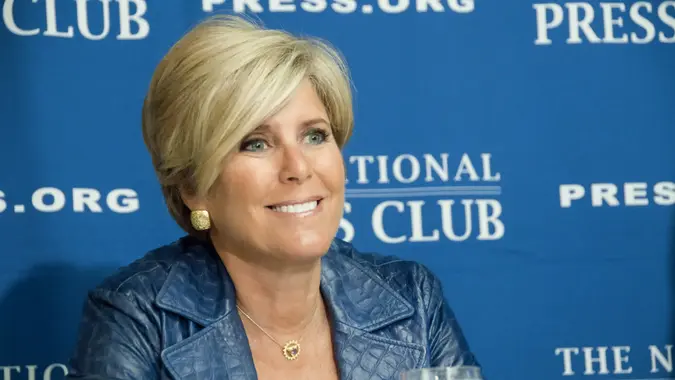5 Best Dates To Retire in 2024

Commitment to Our Readers
GOBankingRates' editorial team is committed to bringing you unbiased reviews and information. We use data-driven methodologies to evaluate financial products and services - our reviews and ratings are not influenced by advertisers. You can read more about our editorial guidelines and our products and services review methodology.

20 Years
Helping You Live Richer

Reviewed
by Experts

Trusted by
Millions of Readers
Trends over the past decade tell us that around 100,000 federal employees retire every year. Before thousands of civil servants do so in 2024, they’ll have to take care of certain financial concerns, including exactly when they should stop working.
Deciding your employment end date is more complicated than simply picking a preferred date. While you should always retire when it meets your needs and interests, it makes sense to strategically retire when you can minimize the time between your last paycheck and your first annuity payment — and maximize your retirement benefit and payout for unused annual leave.
According to the Congressional Research Service, in 2022, 98% of civilian federal employees were enrolled in the Federal Employee Retirement System (FERS) of benefits, which covers employees hired since 1984. A further 2% were enrolled in the Civil Service Retirement System (CSRS), which covers those hired before 1984.
For those covered by FERS, your retirement date must be no later than the last day of the month in order to be on the annuity roll in the following month. Once you retire, your retirement date becomes the first of the following month. Your first FERS annuity check then will be sent to you on the first day of the following month after retirement.
For example, if you’re in the enviable position of retiring at the end of the month — on Jan. 31 — your retirement date will be the next day, Feb. 1. Your first FERS annuity check would arrive on Mar. 1.
If you are enrolled in CSRS, you must retire no later than the third day of a month and be on the annuity roll in that month. However, your first month’s annuity would be reduced by 1/30th for every day you weren’t on the annuity roll.
Should You Retire on the Last Day of the Month?
Common sense dictates that you should retire on the last day of the month to shorten the gap between getting paychecks and getting annuity payments. This could present a difference of between four-to-five weeks and seven-to-eight weeks, depending on the day of the month you set as your retirement date.
For example, Mar. 30, 2024, is a good date to retire, because it lands at the end of the week and the month. However, a better date is one that falls at the end of the month which also happens to be at the end of a pay period, so you won’t have to wait as long for your annuity and to make the most of your accrued annual or sick leave pay. There are only three such dates that fall on a Friday or Saturday in 2024: May 31, Jun. 29 and Nov. 30.
Here are the five best dates to retire in 2024.
5 Best Dates To Retire in 2024
1. Saturday, March 30, 2024:
- Retirement date: April 1, 2024. Annuity payments begin: May 1, 2024.
2. Friday, May 31, 2024
- Retirement date: June 1, 2024. Annuity payments begin: July 1, 2024.
3. Saturday, June 29, 2024
- Retirement date: July 1, 2024. Annuity payments begin: August 1, 2024.
4. Saturday, November 30, 2024
- Retirement date: December 1, 2024. Annuity payments begin: January 1, 2025.
5. Tuesday, December 31, 2024
- Retirement date: January 1, 2024. Annuity payments begin: February 1, 2025.
At the risk of overloading the U.S. Office of Personnel Management, more federal employees retire on Dec. 31 than any other day of the year. Retiring at the end of the year makes sense for a lot of people, not only to start the new year freshly retired, but to ensure they get the highest lump-sum payment possible for their “use it or lose it” annual leave.
 Written by
Written by  Edited by
Edited by 

























